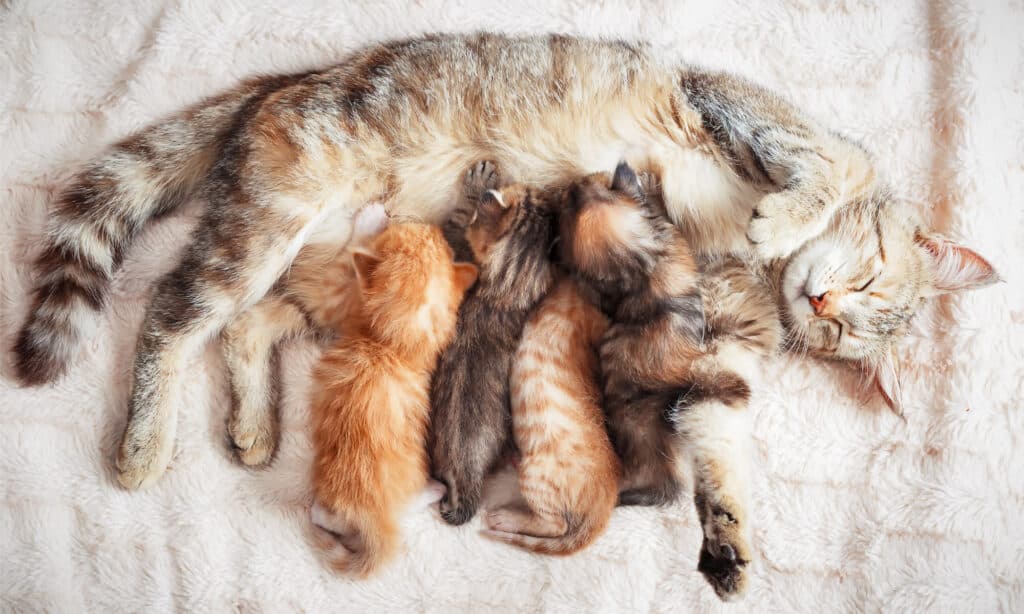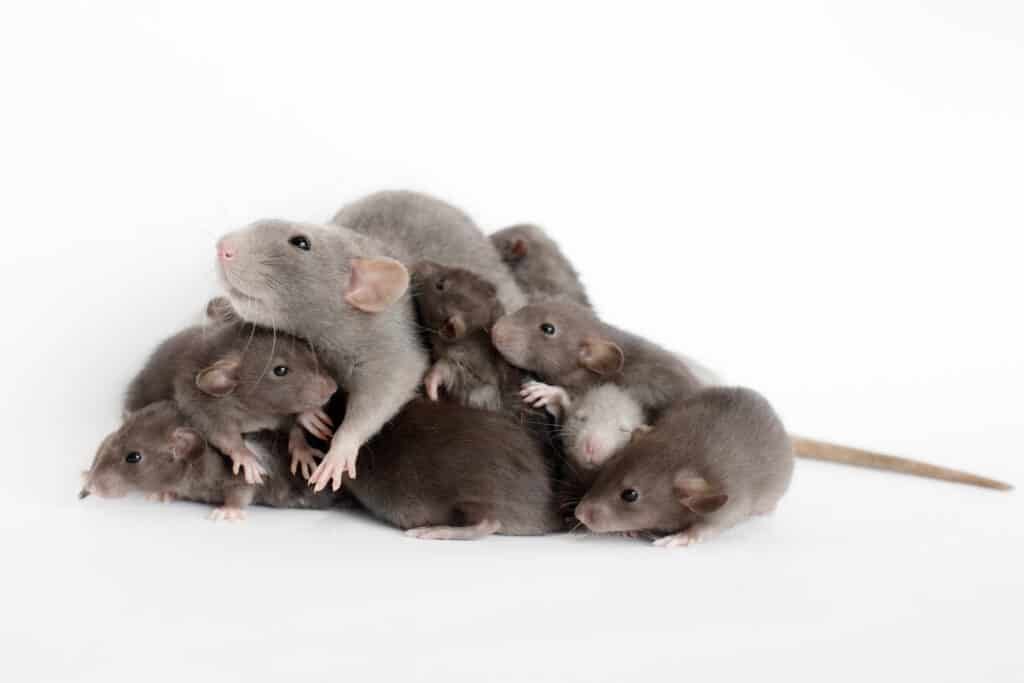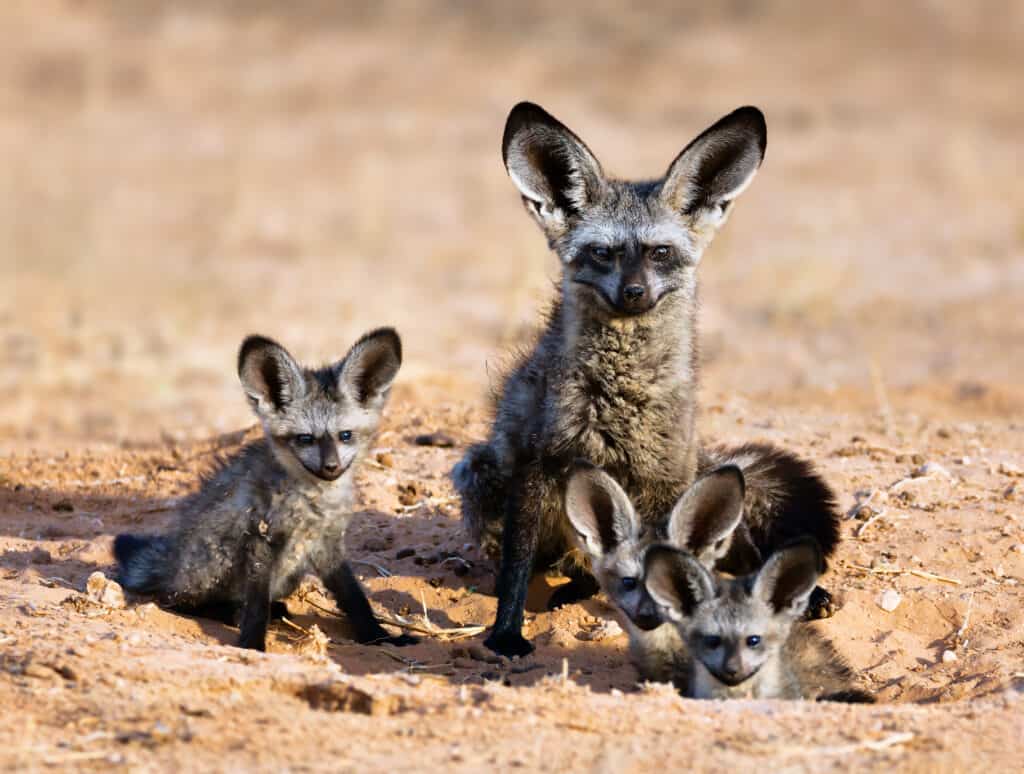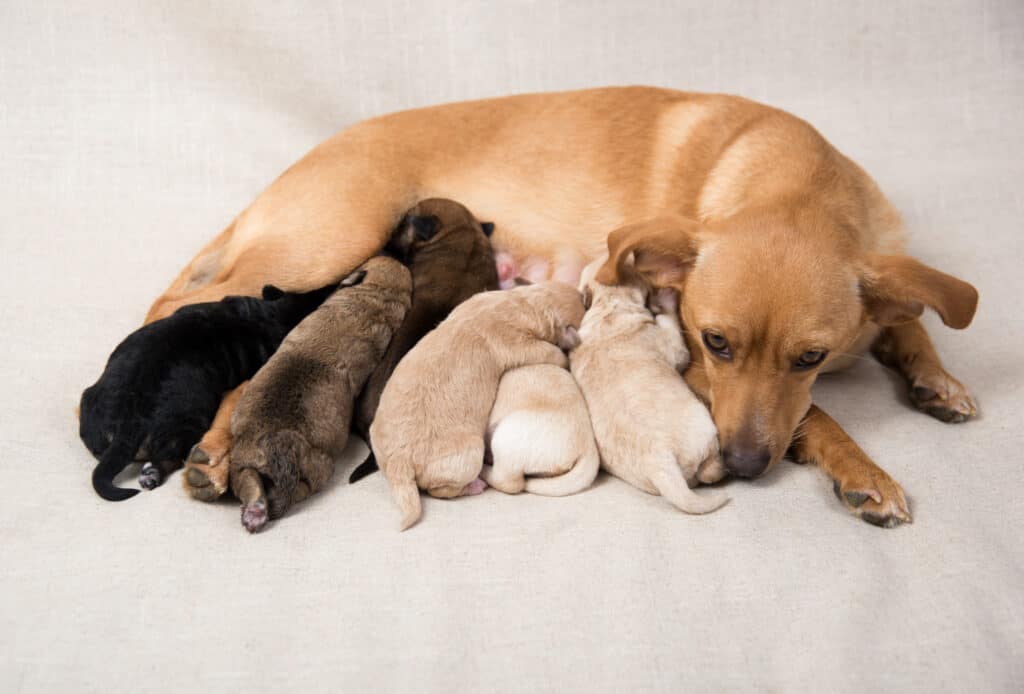The average number of offspring produced by an animal during one birth.
Summary
This phrase refers to the normal or expected number of offspring an animal will produce during a single birth. This number can vary depending on the species of animal since not all animals will produce multiple offspring in a litter and instead only give birth to one. A litter of offspring is common amongst mammals that give live birth, and they are expected to have more than one offspring. The litter of offspring will be produced from the same female animal during a single birth, and the offspring from the same litter are referred to as littermates. Certain factors can influence the average litter size, such as genetics, uterus type, and the duration of the gestation period.

Cats have an average litter of 3-5 kittens.
©iStock.com/bozhdb
Calculating an Animal’s Average Litter Size
The maximum size of an animal’s litter depends on the number of teats they have. However, the average litter size is about half the number of nipples the animal has, varying by one or two. If the animal only has 12 nipples, then the average litter size for that specific animal will be around 6 offspring. There are animals that are an exception to this rule, and their average litter size may exceed or match the number of treats that they have. The naked mole rat is a good example of an animal that has an average litter size of 11 pups while having approximately 12 nipples.

Female rats can have from 8 to 18 pups per litter.
©Maryia Karneyenka/Shutterstock.com
Factors That Affect The Average Litter Size
There are certain factors that can influence the average size of the litter, such as the:
- Species of animal
- Genetics
- Gestation period
- Age
- Number of teats
- Type of uterus
- Overall health
Aside from the genetic factor, there are many environmental and nutritional factors that can affect the animals’ average litter size.
Certain species of animals like the tenrec naturally have a larger average litter size. This is mainly due to the females having 29 nipples, with an average litter size of 13 to 20 offspring. Sometimes, the tenrec can have up to 32 offspring during a single birth. Whereas other species of animals may have fewer nipples and do not need to have such a high number of offspring. Genetics plays a role in the average litter size for a particular species of animal. For example, a dog with smaller gene pools may have a smaller litter in comparison to dogs with larger gene pools.
Age can affect the size of the mother litter, and it is common for some young and first-time mothers to produce smaller litter. However, as the mother nears her optimal breeding age, the litter may become smaller too. If the animal were to produce multiple offspring, the uterus would need to accommodate the growth of multiple fetuses. This means that the uterus must handle the capacity of offspring the mother will carry during pregnancy.

Bat-eared foxes have three to six kits per litter.
©Etienne Outram/Shutterstock.com
Average Litter Size of Common Animals
| Animal: | Average Litter Size: |
| Dogs | 4 to 6 pups |
| Cats | 3 to 5 kittens |
| Hamsters | 6 to 7 pups |
| Rabbits | 6 to 10 kittens |
| Rats | 6 to 11 pups |
| Hedgehogs | 4 to 6 hoglets |
| Wild boar | 4 to 6 piglets |
| Bear | 1 to 3 cubs |
| Beaver | 4 to 5 kits |
| Tenrec | 13 to 20 offspring |
| Prairie vole | 4 pups |
| Opossum | 6 to 8 joey’s |
How Animals Have Multiple Offspring
It is normal for many species of animals to produce multiple offspring at a time. Litter-bearing animals will always have more than one offspring at a time because the female releases multiple eggs. These eggs will produce multiple embryos once they have been fertilized, but in some cases, the mother will only give birth to one baby even if it is normal for the species to have multiple offspring.

Dogs have an average of 4 to 6 puppies.
©Anna Hoychuk/Shutterstock.com




